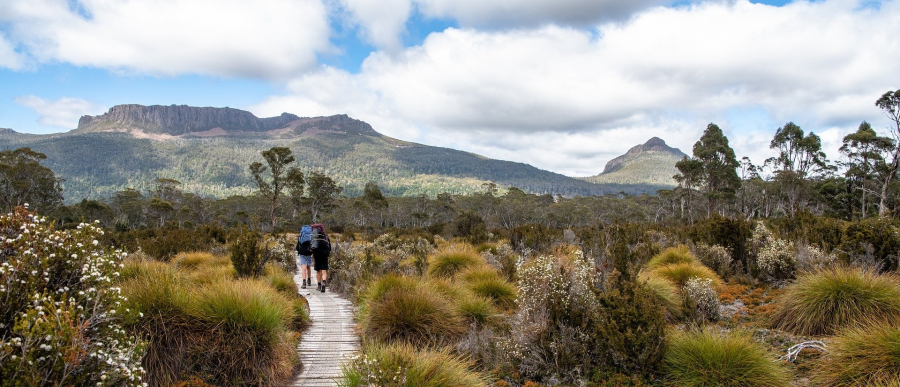Climate Change in Australia
Climate information, projections, tools and data

Tasmania's Changing Climate
Tasmania is already experiencing the impacts of climate change. The climate of Tasmania is projected to continue to change into the future.
Climate change projections of Australia’s future climate are delivered at a national level through the Climate Change in Australia website. In addition, state-based climate projections for Tasmania are delivered by the Tasmanian Government through the Climate Futures for Tasmania project. These state-based projections are provided at a higher resolution than the national projections, provide local-scale information and may better represent regional climate. While the methodologies for producing the national and state-based projections differ, the resulting information about the changing climate is broadly consistent, with some regional differences.
For more information and data on Tasmanian regional climate projections, please visit the Climate Futures for Tasmania website website.
The climate statements below are largely based on the national projections data provided through the Climate Change in Australia website, and on past observational data from the Australian Bureau of Meteorology. Projections are focused on mid-century (2040-2059) relative to 1986-2005 (unless otherwise stated), in line with baselines used by the Intergovernmental Panel on Climate Change Fifth Assessment Report (IPCC AR5). Projections are based on a high emissions scenario (RCP8.5), and averages refer to the average of projected changes across the whole State.
Tasmania is already experiencing the impacts of climate change:
- All of Tasmania has warmed since 1910. Average annual temperature has increased by 1.1 °C since 1910.
- Annual average rainfall has decreased over Tasmania since 1900.
- The number of days with dangerous weather conditions for bushfires has increased across the region.
The climate of Tasmania is projected to continue to change over the coming decades. By mid-century, the following changes are projected:
- Tasmania will continue to get hotter into the future.
- Under a high emissions scenario (RCP8.5), Tasmania can expect an average annual temperature increase of around 0.9-1.7 °C (central estimate of 1.2 °C).
- Large and sustained reductions in global greenhouse gas emissions (RCP2.6) reduce warming to around 0.3-1.1 °C (central estimate of 0.7 °C).
- The number of hot days1 (>30 °C) will increase from 4 or 5 days per year to 8 days per year in Hobart, and from approximately 3 to 8 days per year in Launceston.
- By mid-century under a high emissions scenario2:
- The climate of Hobart is projected to be more like the current climate of Geelong, Vic; and
- The climate of Launceston is projected to be more like the current climate of Bathurst, NSW.
- Tasmania can expect longer fire seasons, with around 40% more very high fire danger days3.
- Sea levels are projected to rise by around 26 cm along the Tasmania coast4.
- Extreme rain events in Tasmania are projected to become more intense.
- Projected change in average rainfall for Tasmania is less certain than for temperature and sea level:
- Approximately 3/4 of models project decreased rainfall. The projected decrease in rainfall is greatest in spring, with greater changes possible under the higher emissions scenarios.
- Notable differences across the state are plausible, including a difference in the direction of change between east and west in some seasons.
Further reading and resources:
- Climate Futures for Tasmania
- Tasmanian Department of Premier and Cabinet (Tasmanian Climate Change Office) website
- Earth Systems and Climate Change Hub
- Bureau of Meteorology, Climate change – trends and extremes
- State of the Climate (CSIRO & BoM)
- IPCC Fifth Assessment Report, The Physical Science Basis
----
Notes
1 Compares 2036-2065 with 1981-2010. For more information, access the Climate Change in Australia Thresholds Calculator tool.
2 Climate Change in Australia Climate Analogues tool.
3 For more information, view the NESP Earth Systems and Climate Change Hub brochure, Bushfires and climate change in Australia (PDF download) .
4 Average of Tasmanian coastal council values from CoastAdapt .
------------
Page last updated 14th March 2021



